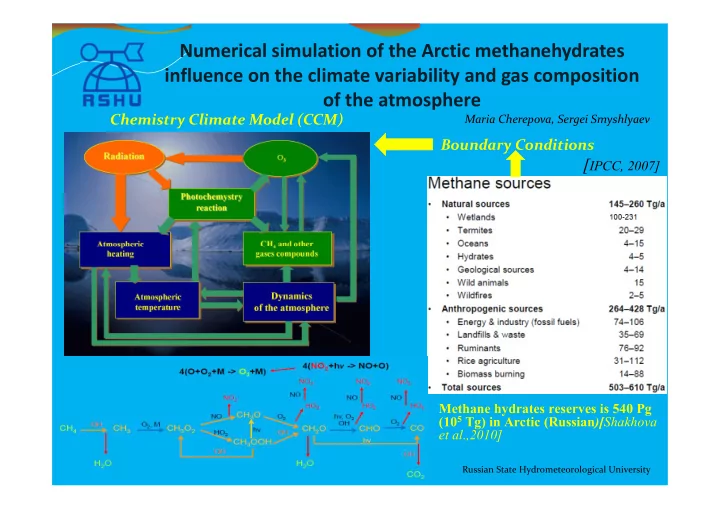

Numerical simulation of the Arctic methanehydrates influence on the climate variability and gas composition of the atmosphere Chemistry Climate Model (CCM) Maria Cherepova, Sergei Smyshlyaev Boundary Conditions [ IPCC, 2007] Methane hydrates reserves is 540 Pg (10 5 Tg) in Arctic (Russian )[ Shakhova et al.,2010] Russian State Hydrometeorological University
INM-RSHU CCM Spatial resolution 4 °× 5 ° Methane emissions [GISS NASA] 39 σ-levels, from surface to 0.1 hPa 74 gases aerosols, polar stratospheric clouds denitrification 174 of chemistry reactions 51 of photochemical dissociation processes Surface emissions (EDGAR, GISS NASA, GEIA, GEIA): - biogenic - antropogenic scenarios modern methane emissions from gas hydrates Russian State Hydrometeorological University
Conclusions and discussions We analyzed numerical modeling results with increased methane hydrates emissions(5,10, 20 times). Increase methane hydrates emissions results in increase concentrations CH 4 We estimated influence of methane on OH content (there are positive feedback). We estimated O 3 in the lower layer of the atmosphere. We got temperature fields and compare fields for each of the increased emissions scenario. Methane hydrates emissions will increase with climate change. Percent change in response to 5 times increased Arctic methane emissions O3 CH4 Temperature
Recommend
More recommend